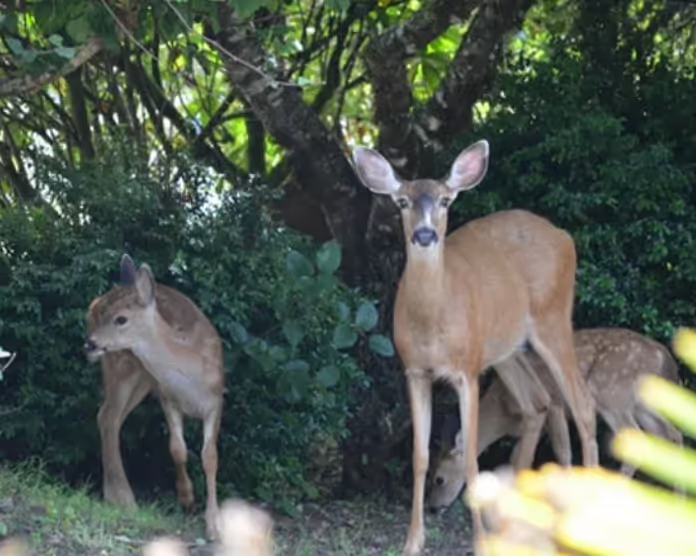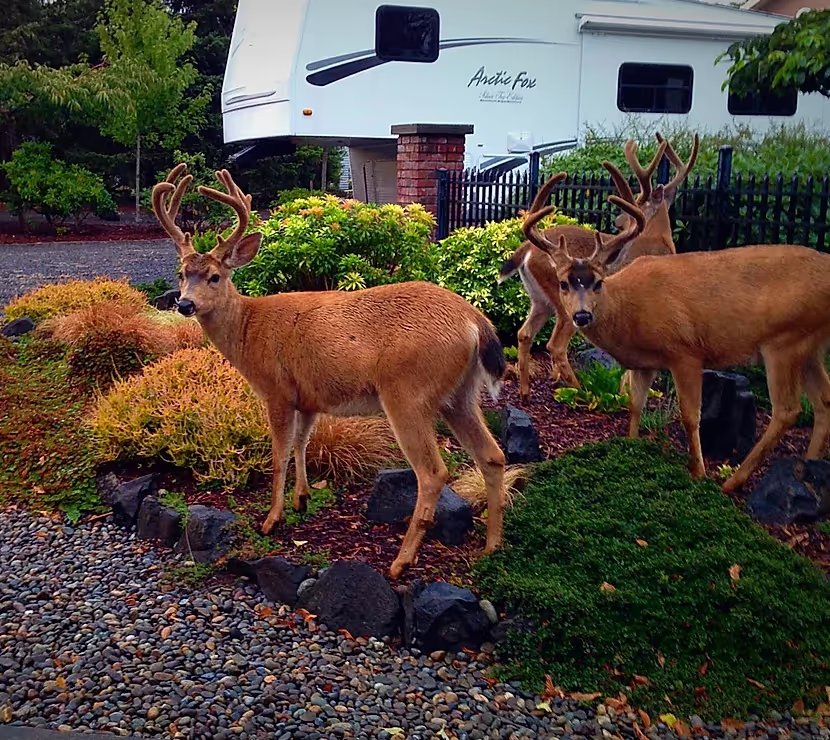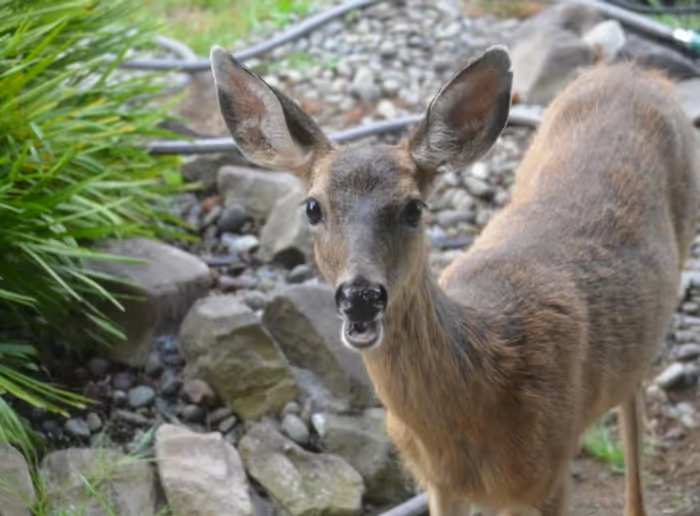Deer Oh Dear, So Many Deer!



Deer, aka vegetable and flower garden nibbler. Tourist attraction. Roadside hazard. Cute. Nuisance. Beautiful. Wild. Photographic subject. Semi-tame. Community debate topic. Pick your term of choice, as there are many descriptors for the ubiquitous deer all around Ocean Shores[about ocean shores in north beaches] and the Point Brown Peninsula.
Center visitors have a variety of questions about our frequently seen residents. The Columbia Black-Tailed Deer - “Odocoileus hemionus columbianus” – is a sub-species of the mule deer. A 2nd mule deer sub-species is the Sitka Black-Tailed Deer, found along the coasts of SE Alaska and around the Gulf of Alaska to Kodiak Island. Both sub-species are similar in size and appearance. Mule deer in general are commonly associated with the Rocky Mountain region and westward of that.

If you think your neighborhood deer look familiar, they most likely are. Black-tailed deer typically maintain a range of ½ mile to 3 square miles. In Ocean Shores, with the amount of available forage, one can quickly recognize the same general group of deer within a few blocks of their residence.
One reason for the extensive local deer population is the low incidence of natural predation factors. Coyotes may target young fawns. A harsh winter may affect older weaker animals. An occasional cougar may wander into the territory. In terms of human predation, within the city limits of Ocean Shores, there is no deer-hunting season. However, vehicle – deer accidents are fairly common.
Local deer thrive in the ideal habitat. Deer forage on a wide variety of browse vegetation readily available. This may include the green tips of trees, shrubs and plants. They also eat fruit, lichens, garden food crops, grass, clover and decorative yard plants. While foraging, deer prefer an edge habitat allowing them open space to find food, with brush and tree cover nearby as a safe escape place.
Concerned local citizens seek answers about how to better manage the local deer population at a healthy level. Their interests range from discouraging feeding by humans, the garden and landscape damage, and traffic safety. Many other communities have similar concerns. To date, there are no easy answers or solutions.

© Jim Nagan, September 2015
Touch whale bones, examine shipwreck artifacts and connect with the coast's living history.

Support our mission, get involved in educational programs, or contribute through donations and volunteering.